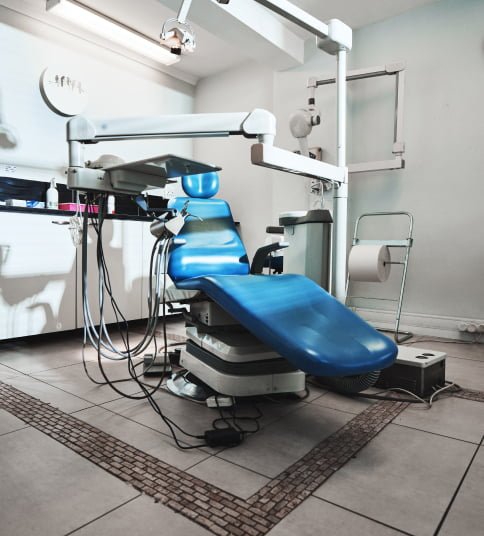- 7W82+HWR, Imambargah road, Bhalwal, Sargodha, Punjab 40410
Sat - Thu: 09:00am - 05:00pm
info@turabidentistry.com
Transforming Tooth Troubles into Happy Smiles
A pulpotomy is a dental technique employed to safeguard a tooth from infection or decay by eliminating the pulp in its crown. The pulp, containing nerves and blood vessels, exists in both the roots and crown of a tooth.
Typically carried out on children’s baby teeth, a pulpotomy can also be effective for adult teeth. If your tooth’s pulp is exposed to decay, infection, or if you have a significant cavity, your dentist might suggest a pulpotomy to preserve the tooth’s health.
If your child exhibits symptoms of pulpitis, inflammation of the pulp, a pulpotomy might be advised. The initial signs often include pain and sensitivity to hot, cold, or overly sweet foods. Pulpitis is commonly a consequence of untreated tooth decay (dental caries) linked to inadequate dental hygiene.
When tooth decay is close to the pulp in the crown, necessitating its removal, a pulpotomy becomes a common course of action. Additionally, severe physical trauma to the tooth in children may warrant a pulpotomy, albeit less frequently.
Early management of tooth decay is crucial to prevent the progression of more serious issues. If you observe any yellow stains on your child’s teeth, scheduling a dental check-up is recommended.
Pulpotomies are frequently recommended for children, as preserving their baby teeth (primary teeth) is essential for proper spacing for the eventual eruption of permanent teeth. Since primary teeth have immature root formation, a pulpotomy is more likely to yield the desired outcome.
While a pulpotomy can be performed on adults, a root canal is typically the preferred recommendation.

Neglecting treatment for an infected tooth can lead to various complications, including pain, swelling, and the deterioration of soft tissues. Initially, pulpitis may not induce pain, but without a necessary pulpotomy, the condition won’t self-resolve, potentially requiring eventual tooth extraction. Moreover, the infection may spread to the jaw, leading to the formation of an abscess.
Preserving all baby teeth is crucial for children to facilitate the proper eruption of adult teeth. If an infected tooth necessitates removal, it might result in eruption issues later on, emphasizing the importance of timely intervention.

Any surgical or dental procedure can evoke anxiety in a child. Assure your child that the treatment is painless and aimed at alleviating any discomfort they may have been feeling. The procedure will be conducted in the children’s dentistry section.
It’s beneficial to explain the process to your child in advance, outlining what to expect. Typically lasting 30-45 minutes, the procedure allows your child to wear comfortable clothing. Bringing a comforting item, like a soft toy, can also help them feel more at ease during the treatment.
Prior to commencing the procedure, the child will have the opportunity to settle into the dental chair, possibly enjoying some entertainment if a TV is available in the room.
First, a numbing gel will be applied to the gums to make it more comfortable. After that, a shot will be given to further numb the area. Sometimes, the child might need to be a little sleepy for this.
To make working on the specific tooth easier and prevent saliva from getting in the way, a rubber dam will be placed in the child’s mouth. This also reduces the risk of the child accidentally swallowing anything. Next, the dentist will remove any decay present on or around the tooth.
The dentist will use a drill to open the pulp chamber by removing the enamel. The procedure can proceed only if the pulp is healthy. If the pulp is not bleeding or is absent, the dentist may have to consider a pulpectomy or tooth extraction instead.
Following that, the irritated pulp will be taken out, and cotton swabs will be employed to control any bleeding
The remaining pulp in the roots will be treated and safeguarded, and the pulp chamber will be sealed and restored. This can involve using a filling or a stainless steel crown.
Children will be observed for 30-60 minutes post-procedure to ensure there are no complications. Common post-treatment effects include vomiting, nausea, drowsiness, and slight bleeding.
After the procedure, your child may experience mild pain or swelling for a few days. Over-the-counter medication can help alleviate these symptoms. Your dentist will provide dietary instructions for the recovery period, typically suggesting soft foods such as scrambled eggs.
During recovery, it’s advised for your child to avoid candy or sticky foods. Additionally, they should refrain from eating on the side of their mouth where the procedure took place.
Ready to repair chips and fractures? Contact Turabi Dentistry to schedule your consultation. Our experienced team will assess your dental concerns and recommend a personalized plan to restore the natural beauty of your smile. Swift solutions await at Turabi Dentistry.

0486645172
Info@turabidentistry.com
Saturday
Sunday
Monday
Tuesday
Wednesday
Thursday